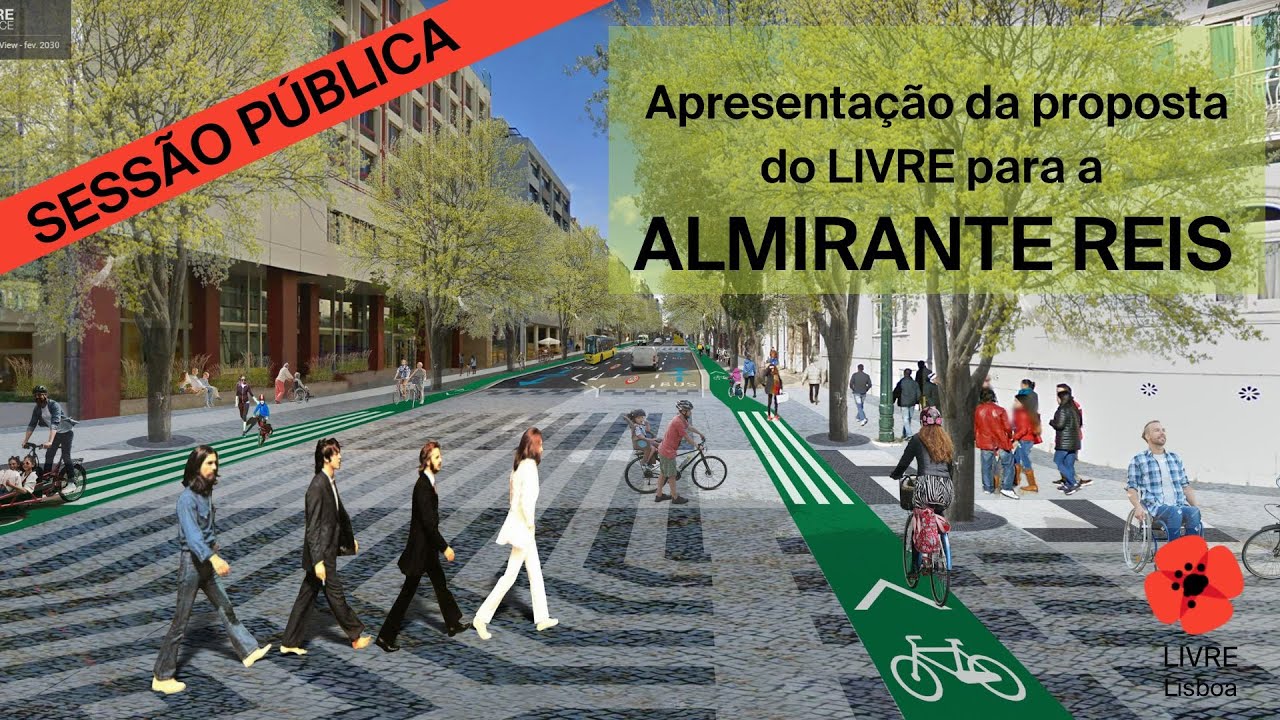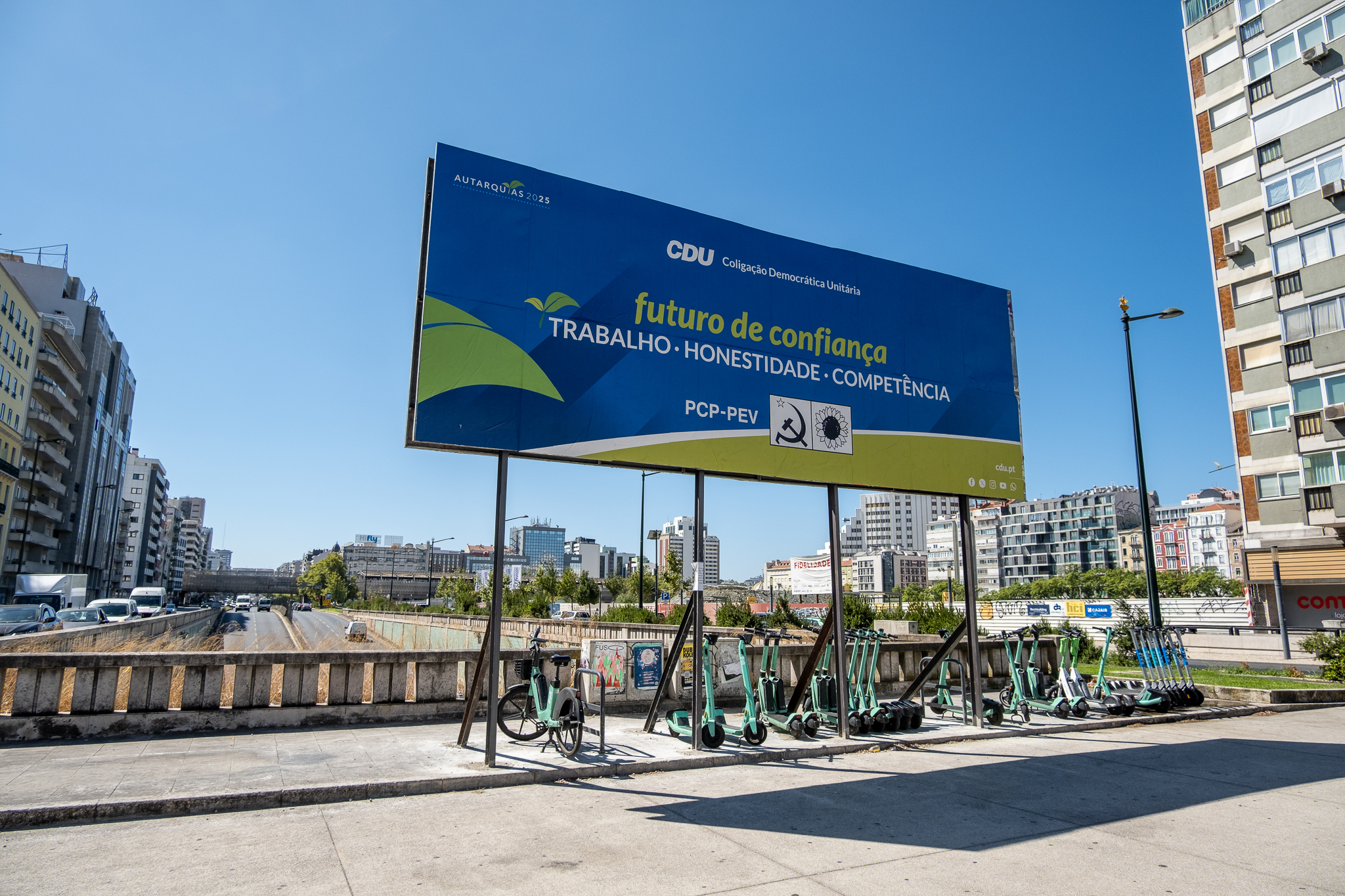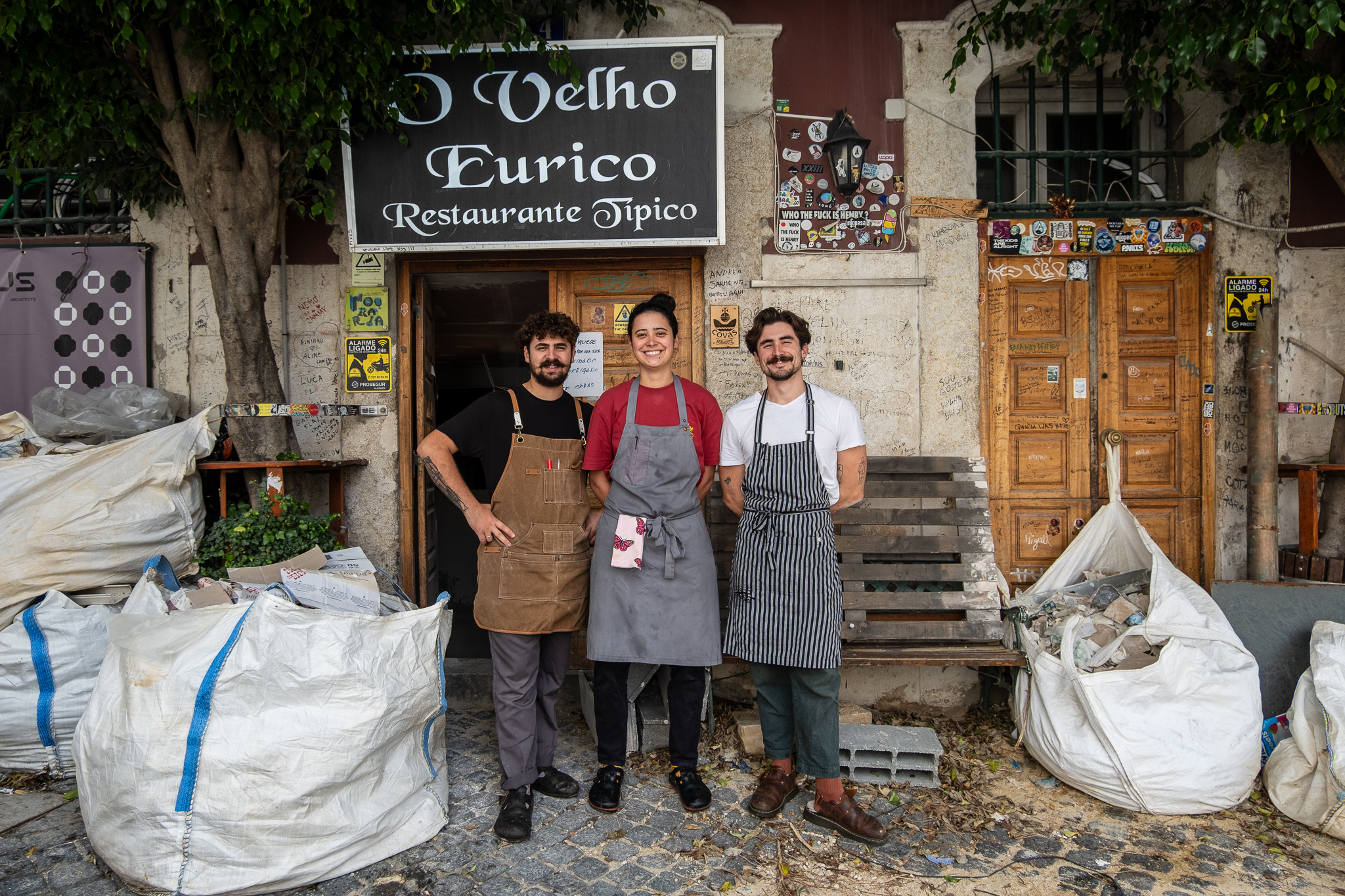Livre got ahead of Carlos Moedas and went ahead with the long-delayed discussion on Almirante Reis, presenting its proposal for the avenue, which goes far beyond the much-hyped cycle path.

O Free disagrees with a third solution pop-up for the Almirante Reis bike path and believes that it's time to start the long-delayed debate on the fundamental requalification of that axis. This Tuesday, at the end of the day, at LACS in Anjos, took the first step, presenting in more detail your proposal for that avenue and its surroundings - a proposal that includes the bike lane but goes far beyond that.
The session was attended by Rui Tavares, from substitute councillor Patrícia Gonçalves and the architect Francisco Costa, the main author of the proposal. Several dozen participants gathered at LACS, including two Socialist councillors: Miguel Gaspar, who held the mobility portfolio in the previous executive, and João Paulo Saraiva. After a historical overview of the avenue, given by Rui Tavares, there followed a moment of diagnosis of the current situation, in particular the context generated by the cycle path, by councillor Patrícia Gonçalves. Finally, Francisco Costa presented international references of avenues with a similar size to Almirante Reis and explained in detail the party's idea for that axis.

During the meeting, which lasted about two hours, Rui Tavares spared no criticism of Carlos Moedas' executive, saying that Livre wants to "have a really open debate" and that this proposal is a way of discussing the future of Almirante Reis "rolling". The leader of Livre accused Moedas of buying a "culture war between motorists and cyclists" and who ended up not fulfilling any of his promises on the subject: "the bike lane wasn't even done away with, and everyone wasn't listened to"nor was a "public consultation process that did not give the predetermined result" to create a third version of the cycle path on the downhill side of the avenue.
Since Lisbon has an Avenida da Liberdade and an Avenida da República, Livre proposes creating an "Avenida da Igualdade" on Almirante Reis - not a change in toponymy, but a strategy for that axis, starting with a redesign of the public space. The idea is to balance the modal percentages: reduce the presence of cars from 63% to 24%, give public transport 24% of dedicated space, give 36% to pedestrians and 16% to bicycles. "The main beneficiaries of this proposal are public transport and pedestrians. Cyclists don't gain that much"summed up Rui Tavares.

As we told you here, Livre proposes an Avenida Almirante Reis with wide, accessible and continuous sidewalks, more crosswalks and all raised crosswalks to calm traffic, create shared zones at all intersectionsa undirectional cycle path in each direction, BUS corridors with accessible and safe stops in relation to the cycle path, remove the central separator and move the trees to the sidesa new street lighting designed for people, not vehicles, and the removal of all surface parkingwith the relocation of loading and unloading bays to the perpendiculars at all intersections along the avenue.
As far as the profile of the avenue is concerned, Livre is suggesting two 3-meter traffic lanes, one in each direction, accompanied by a BUS lane in each direction (also 3 meters), two 1.5-meter one-way bicycle lanes and wider sidewalks (3 to 4.5 meters, with 1 meter for planting trees where there are no subway stations).


At Tuesday's session, some more details of the proposal were presented that had not been revealed at the public meeting of the City Council:
- the possibility of the BUS corridor having other functions at other timesIn addition, it can be used for loading and unloading early in the morning and late at night (11 p.m. - 7 a.m.);
- a survey of all the parking facilities on and around Almirante Reis - of hotels, shopping centers, office buildings, etc. - so that these facilities can be used, when they are not being used by their owners, for parking by residents of the area;
- evaluate the possibility that the loading and unloading spaces created perpendicular to the avenue could be used as parking for residents at night, in yet another hybrid use strategy;
- study the construction of a silo park or underground structure in the Portugália block and negotiate more affordable rentals in existing parks. However, Rui Tavares said that "if you have to sacrifice somewhere, in our proposal it has to be parking, and we have to be clear about that";
- possibility of temporary occupation on AvenidaThese occupations can take place on one or two blocks, such as street fairs and festivals (food, literary or music festivals), which partially or completely cut off traffic. These occupations can take place in just one or two blocks, and can also take place in just one of the four lanes;
- the proposal involves to move the current streetcar tracks by about half a meter to the inside of the avenueIn this way, it will be possible to insert the cycling channel without displacing the Metro nozzles or hindering pedestrian mobility;
For Alameda Dom Afonso Henriques, architect Francisco Costa suggests connect the two parts of that green areaThis would make the central part exclusive to public transport, pedestrians and bicycles. Other vehicles would have to go around the Alameda, which could reduce the amount of traffic crossing the area. With this idea, pedestrian crossing from one part of the Alameda to the other would be easier than it is today, where people on the grassy area are forced to cross the road at least three times.

The Livre proposal can be made in a phased and evolutionary manner, i.e, can be implemented in five steps. To wit:
- first and without touching anything (not even the bike lane), create accessible and comfortable, continuous and safe pedestrian paths at least 2 meters wideHe also pointed out that the new road will be free of any obstacles or obstructions along the whole of Avenida Almirante Reis, including Rua da Palma. Francisco Costa said that this step "it can be done as early as tomorrow"because it represents a small financial effort;
- then, create accessible raised crosswalks between existing intersectionsevery 100 meters. According to Francisco Costa, Avenida Almirante Reis has a width that imposes pedestrian crossings that are less distant than those that exist today;
- a third step to redesigning and calming existing intersectionsThis would raise them and multiply the possibilities for pedestrian crossing. People would be able to cross diagonally if they wanted to;
- in a fourth step, the elimination of the central separator, o widening sidewalks, a creation of bicycle lanes next to the sidewalk, and the implementation of BUS lanes and accessible stops;
- the last step, at the same time as the previous one, consisted of creation of the two new tree alignmentsOne on each side of the avenue, with large-scale tree planting.





Architect Francisco Costa admitted that it could be study your proposal in a block or two before moving on to the whole avenue. Rui Tavares, for his part, believes that this planning of the Livre "it's not in the tens of millions of euros" contrary to what Moedas says he intends to spend on Almirante Reis; by saving on a third pop-up cycle path, Tavares says there will be more budget available to invest in other arteries in need in that area or in other parts of the city, such as Rua de Arroios or Avenida Almirante Gago Coutinho, two long-awaited redevelopments.
The Livre proposal could be redesigned by restricting car traffic in the city center. In this scenario, "we can be more ambitious"Francisco said, proposing to increase the sidewalks to at least three meters wide and make the avenue exclusive for local traffic and public transport. With a ZER in Baixa-Chiado, it would be possible to give 60% to the pedestrian and there would be no need for dedicated public transport corridors, since, with less car traffic, the avenue could have just two lanes.

Free wants ask LNEC for a detailed traffic study, with a count of all the vehicles on Avenida Almirante Reis - with the possibility of residents actively participating in it and thus helping the local authority - to detail the origin and destination of vehicles. This way, the party believes, it will be possible to gauge the real percentage of local traffic on Almirante Reis and the surrounding area, from residents and shoppers, and the percentage of through traffic. In Livre's opinion, through traffic corresponds to vehicles that can and should have an "outlet" on other roads, rather than crossing the city on an axis with the liveliness of this avenue, for the sake of local interests.
After an initial public presentation and debate at LACS - which Livre made a point of recording and broadcasting online, unlike the participatory sessions promoted by the Lisbon City Council - the party intends to continue working on this proposal with all the people, parties and entities that want to be part of it, "in the quest to build an avenue that is safe, clean, tree-lined and for everyone". "Our issue is not the bike lane but the avenue and the city"said Rui Tavares. "We are a party that wants to discuss this idea" and that "wants to do it with people and not against people".












